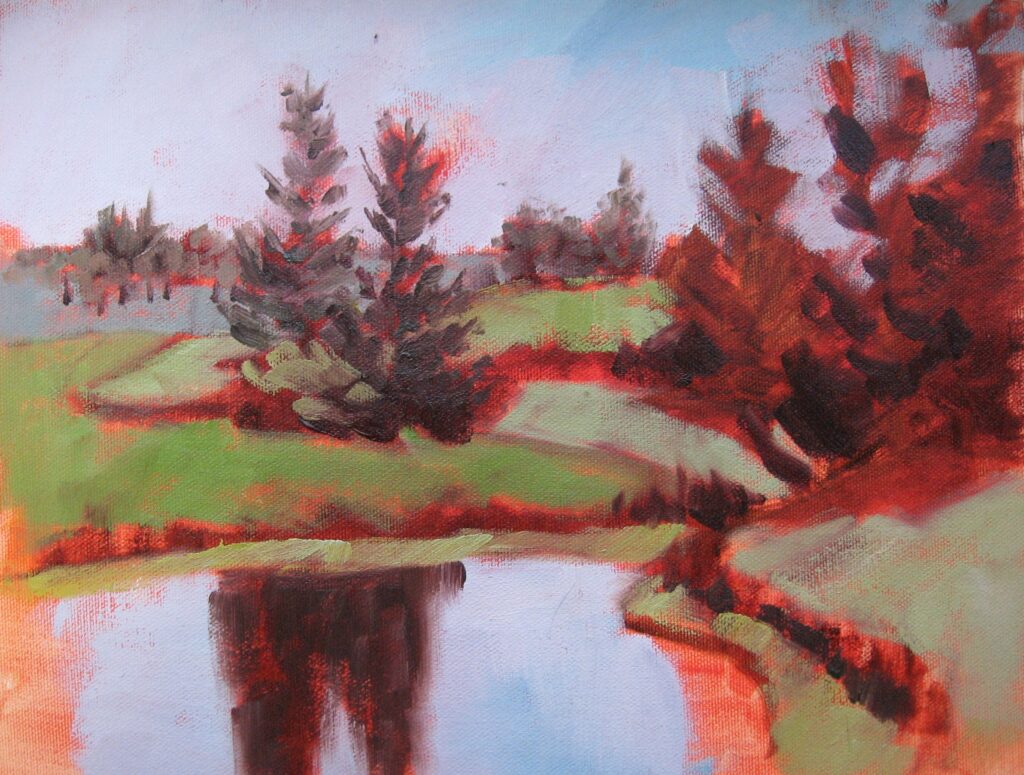Apple Blush

Ever ready at hand, the blessing of the apple tree. Here is a very quick paint sketch of the delicious sweet, yellow apple with a blush of crimson on its cheek. Its simple form, like the earth, is always circling in light and shadow.
Dusty Rose

The rose above was an experiment in painting with the fewest strokes possible, a skill that still needs honing. Every rose is so unique in its petal formation and therefore so interesting. To simplify its complexity while still being true to roseness is the challenge. The canvas was very small, a good reminder not to overwork the piece.
Susie’s Lamp

I have a sister-in-law who is also an artist. She does wonderful photography and pottery. This scene is of one of her recent shows that displayed both.
I try to remember what one painter taught: that painting is all about the light. If you can study the behavior of light on objects, you can better render reality. Easy to say; intense to pursue. I like to think that life is all about the light…of truth, goodness, beauty…
Hill and Vale (last stage)

Here is the finished landscape of yesterday’s post. Just seeing it again brings back the complete sensation of the this particular outdoor scene. If you look closely, (in yesterday’s post especially) you may find a tiny gnat in the sky that dove in and expired. I owe a debt of gratitude to the little critter for this sacrifice which lends greater realism to my work.
Hill and Vale (beginning stage)

In September, a few of us of the plein air type set up our easels to paint the beautiful landscape surrounding our home in Chardon, Ohio. Nothing is more immediate than filtering through you all that you sense to the end of your brush, from the smell of the earth to the sounds in the trees. Whenever I produce a painting outdoors as I did this one, it later has the power to recall all facets of the experience. This is the first half of development in the painting.




